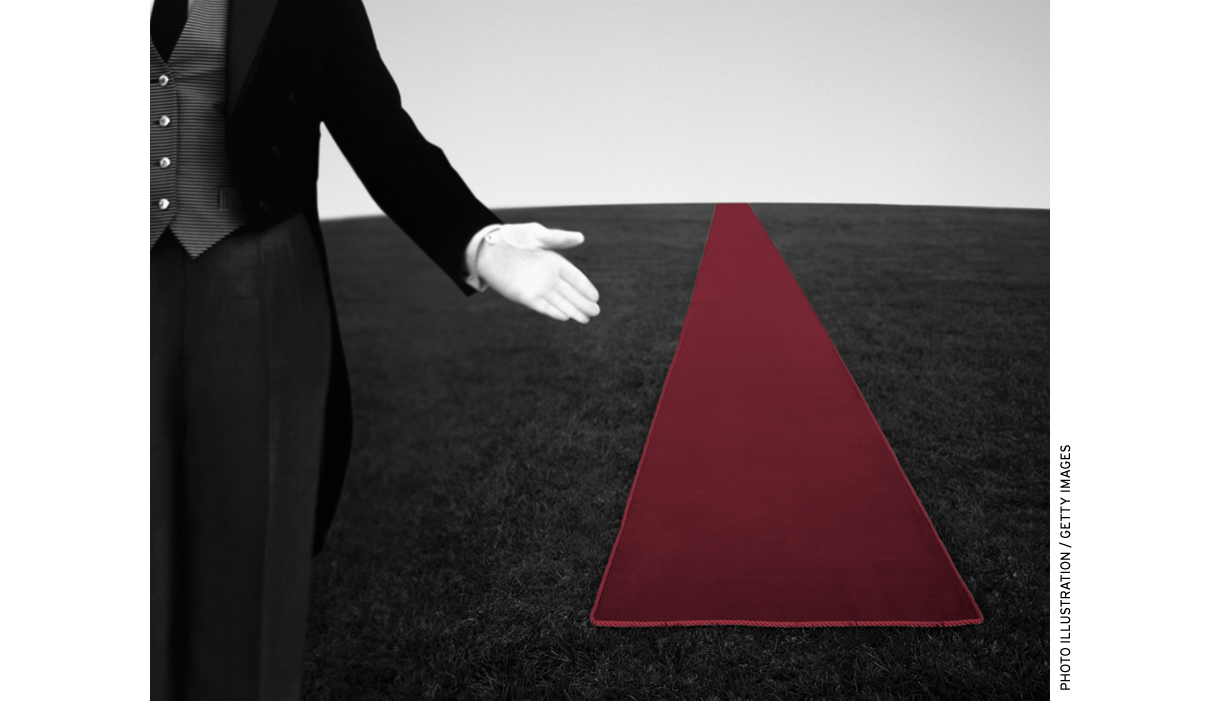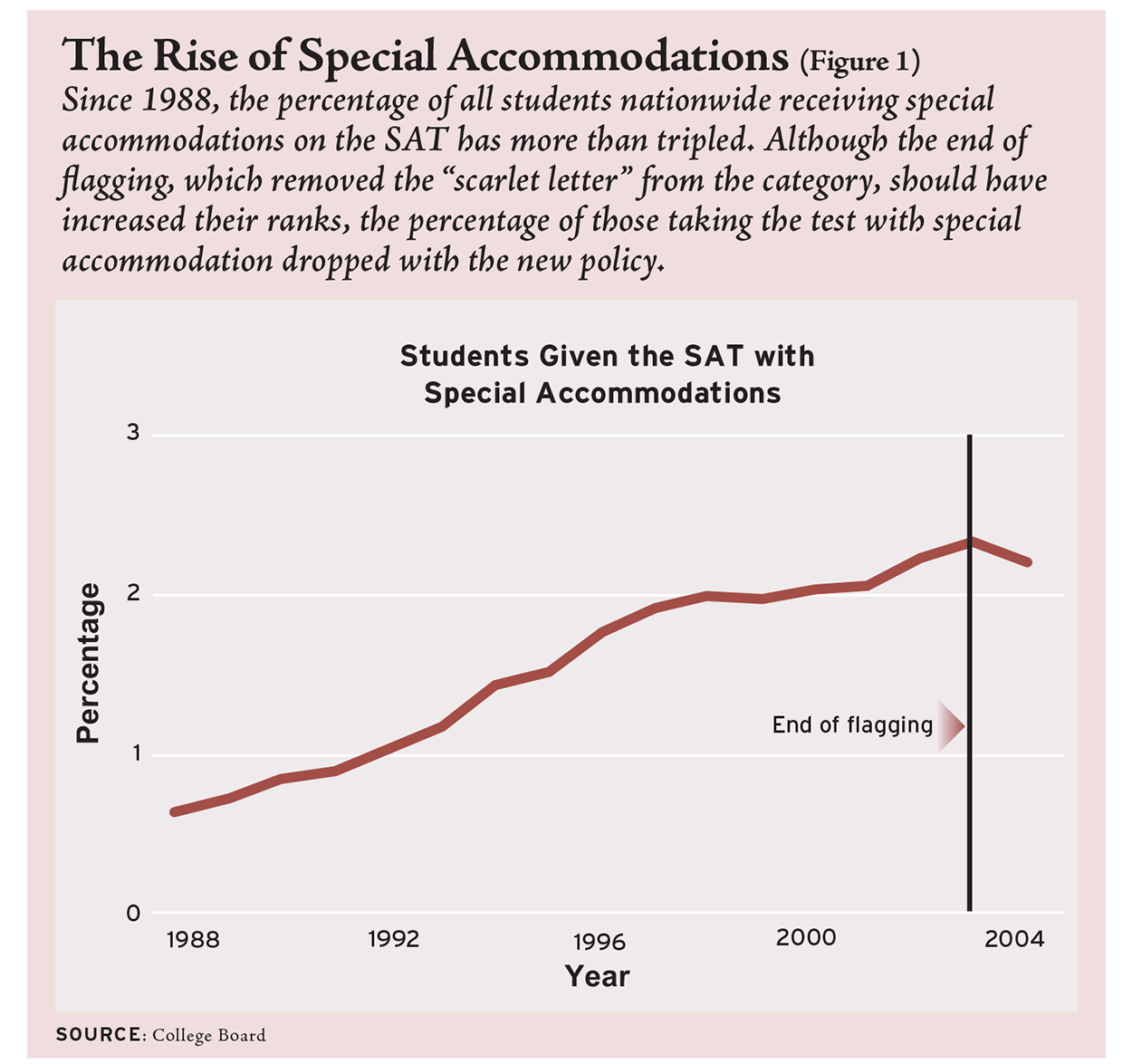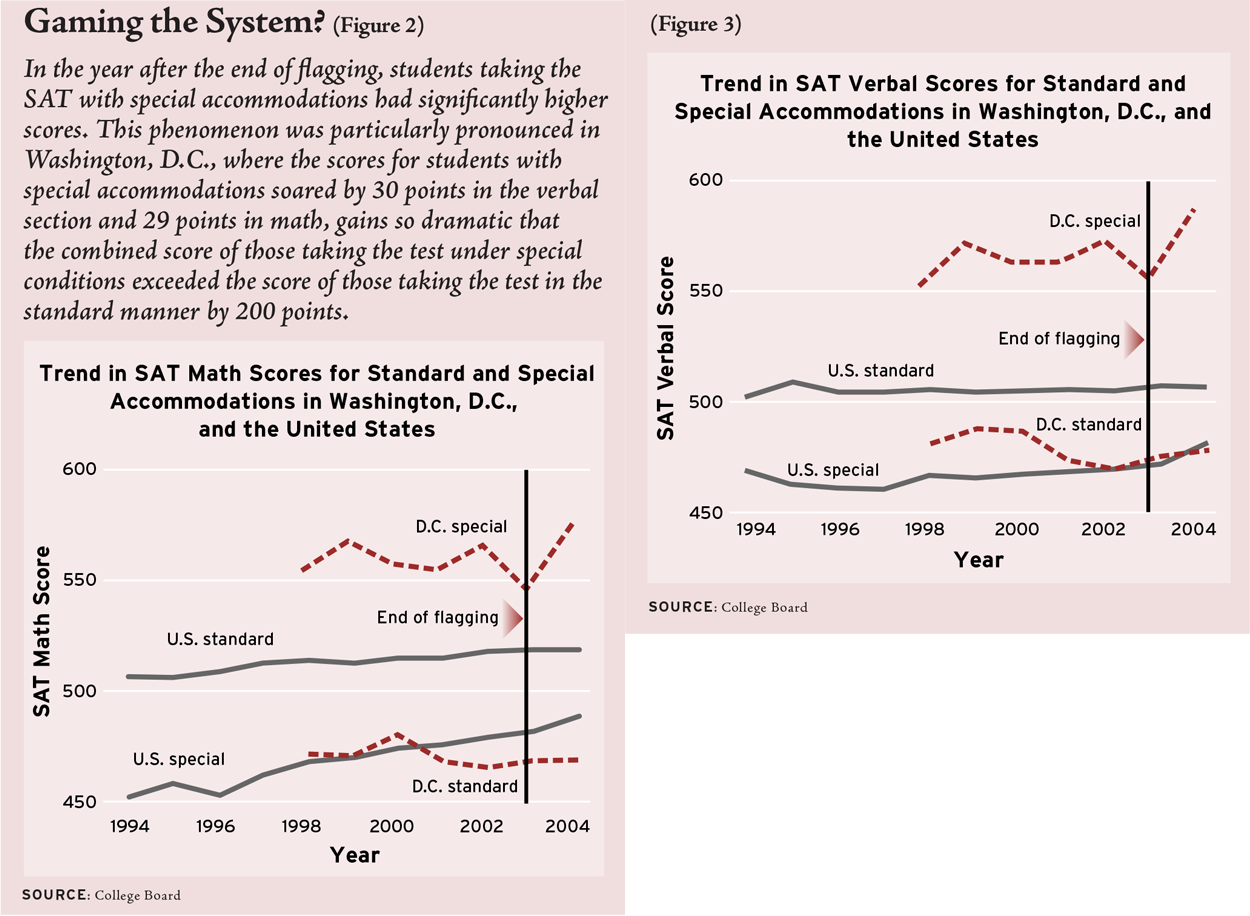
When the College Board announced, in the summer of 2002, that it would stop “flagging” the test scores of students who were given special accommodations for the SAT, the gold standard exam for college admission, disability advocates were thrilled. “A triumphant day for millions of people with dyslexia and other disabilities,” exclaimed Thomas Viall, the executive director of the International Dyslexia Association. “With the -scarlet letter’ gone, people with disabilities are given the chance to succeed, based on their abilities.”
For years the College Board had placed a mark alongside the test scores of students who were given special accommodations. That could mean Braille for the blind or appropriate tools for the physically disabled, but for the most part the special arrangement meant more, even unlimited, time to take the test.
Indeed, the scarlet letter disappeared in October of 2003, but not everyone was so sanguine about the possible consequences. Miriam Freedman, an attorney specializing in issues of testing, standards, and students with disabilities, expressed the concern of many academics and practitioners (“Disabling the SAT,” Education Next, Fall 2003) that the deflagging decision would drive requests for special accommodations skyward as more students saw an opportunity to secure an advantage without anyone knowing it.
The Newly Disadvantaged
Surprisingly, now that detailed 2004 SAT results have become available, it appears that growth in special accommodations is not the real problem. As Figure 1 shows, dropping the flag did not accelerate the already steep climb in the numbers of test-takers given special accommodation-it appears to have reversed it. What happened?
As it turns out, the College Board, worried about the rush to accommodation, tightened the criteria high-school counselors and other professionals were to apply when granting waivers. And this increased scrutiny did not go unnoticed, especially by those in the business of finding students any possible advantage in preparing for this high-stakes test. For instance, on the web site of one such test-prep business, Ivy Bound, the company’s owner, Mark Greenstein, advised potential clients that “there are now many more applicants for extended time, and…rightly or wrongly, the criteria for formal approval have heightened.”
As the criteria for special accommodations permission has tightened, there are clear signs that the social composition of those given such permission has been altered. By abolishing any stigma that might come with a flagged test, while tightening access to special accommodations, the College Board has given new opportunities to the strategic, while leaving behind the less savvy and less financially well-endowed.
There is no statistical smoking gun indicating that the sophisticated are being given special treatment. But the test-score results presented in Figures 2 and 3 should give College Board officials cause for concern. In 2004, the first full year after flagging was abolished, “special” verbal scores jumped by eight points, the largest one-year gain since such scores were reported. The gains in math were nearly as great, with scores increasing by seven points in 2004.
One cannot attribute these gains among special-conditions test-takers to any overall improvement among regular SAT test-takers. As Figures 2 and 3 also show, those who took the SAT under standard rules did no better on either the verbal or the math component of the SAT than their peers had done in 2003.
Why would special test scores be the only scores to leap the year flagging was abolished, even while the number of such test-takers fell? Did a student acquire a distinct advantage by hiring a college admission strategist or having an astute high-school guidance counselor? Information from the nation’s capital provides a glimpse into what may be going on.
The Nation’s Capital: A Microcosm
Ordinarily, one would anticipate lower test scores among those receiving special accommodations. The test scores of the disabled, however hardworking, can be expected, on average, to trail the typical college-bound student. Indeed, as Figures 2 and 3 show, that is the national pattern. Although the gap has closed in recent years, those receiving special accommodations still score, on average, about 60 points below the level reached by those tested under regular conditions.
The patterns in Washington, D.C., are quite different, probably because the city is divided between extremes of wealth and sophistication on the one side and poverty and low achievement on the other. Such disparities exist in other large metropolitan areas, of course, but they cannot be observed there because the College Board releases only statewide results. Washington, D.C., is the exception.
And in the nation’s capital we see an interesting set of numbers. While the SAT scores of the average standard test-taker there did not change much in 2004, those given special accommodations jumped. Even before flagging was abolished, the special-accommodation students were outscoring their peers: 550 in both verbal and math in 2003, compared with 475 in both for the standard student. Clearly, these students are out of the ordinary in ways not related to having a disability.
Then in 2004, the first year of nonflagged testing, the average for the special test-takers jumped upward by 30 points (to 577 in math and 584 in verbal), giving them a score no fewer than 100 points higher than the average for students taking the test under standard conditions (468 and 481, respectively).
The District of Columbia is not the only place where there are signs that the advantaged are exploiting arrangements allegedly designed for the disadvantaged.
In 2000 the California state auditor released SAT test-taking data that the College Board had otherwise kept under wraps. According to the report, 84 percent of the state’s special test-takers in 2000 were white, while they accounted for just 68 percent of those taking the test under standard conditions. Similarly, privileged public schools such as those in Beverly Hills, Torrey Pines (La Jolla), Calabasas, La Canada, and Corona Del Mar (Newport Beach) had above-average percentages of special test-takers. By contrast, reports the Los Angeles Times, at ten inner-city schools in the Los Angeles area, none of the 1,439 collective SAT test-takers received extra time or other accommodations.
Abolition of flagging was expected to make the SAT more fair and open to all. Ironically, the consequences appear to be quite the contrary.
Samuel J. Abrams is a research fellow in the Institute for Quantitative Social Science at Harvard University.




